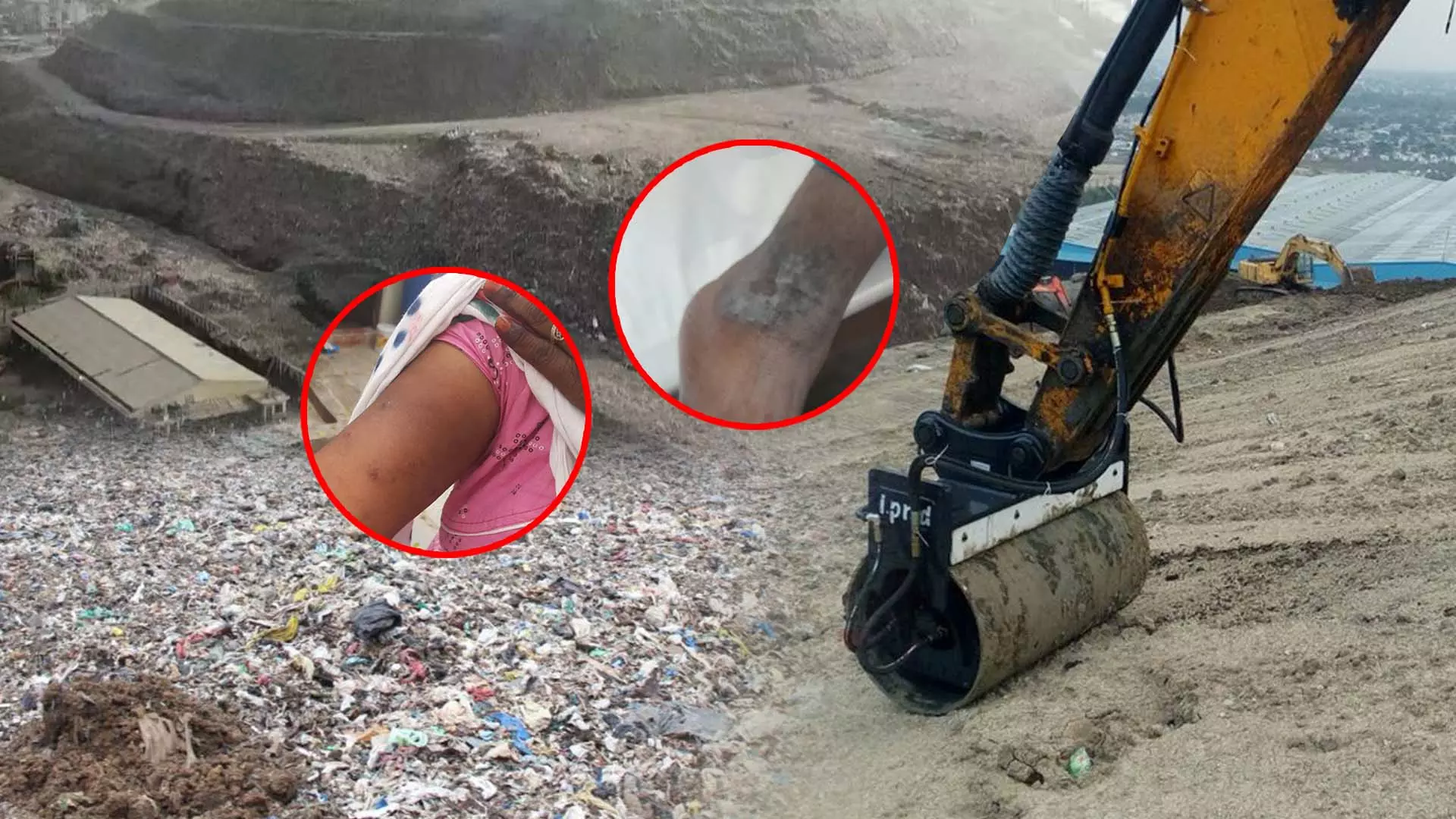
Locals struggle with asthma, skin and lung diseases, and mosquito-borne illnesses like dengue.
Hyderabad’s garbage capital: Jawahar Nagar’s 27-year struggle for clean air
For almost three decades, Hyderabad’s garbage has suffocated Jawahar Nagar. Can residents survive amid disease, pollution, and government neglect?

Jawahar Nagar, named after India’s first Prime Minister Jawaharlal Nehru, hides a grim reality. Just 31 km from Hyderabad, this town has been choked by mountains of garbage for 27 years, exposing residents to toxic fumes, polluted water, and rising disease.
Heavy trucks arrive daily, dumping 8,500 to 12,000 tonnes of waste, while leachate water contaminates nearby ponds. Locals struggle with asthma, skin and lung diseases, and mosquito-borne illnesses like dengue.
Despite promises of waste management and a “garbage-to-power” plant, the problem persists. “We cannot breathe freely, and children fall sick frequently,” says a resident of Gabbilalapet.
Mountains of garbage
Hillocks of trash tower like mountains, covering 351 acres of Jawahar Nagar. Groundwater is contaminated, and the stench affects multiple villages including Nagaram, Dammaiguda, Rampalli, Ambedkar Nagar, and Karmika Nagar.
Residents say accidents involving heavy trucks have claimed lives. Even festivals such as Dussehra and Christmas worsen the crisis as daily garbage inflow spikes to 12,000 tonnes.
GHMC pays Rs 1,453 per tonne to a private company, Ramki, for handling waste. Food and slaughterhouse waste is sold, industrial and hospital waste is processed in plants, and dry RDF waste is used to generate electricity. Locals allege, “Profits are made while we bear the health risks.”
Hazardous housing
Shockingly, the state government built 20,000 houses for the poor within 100–250 metres of the dumping yard, violating the 2016 Waste Management Rules that require a 500-metre buffer.
Activists question whether the poor are being forced to live next to a hazard zone. National Green Tribunal (NGT) orders for new dumping yards in Lakdaram, Pyaranagar, Ibrahimpatnam, and Dundigal have largely gone unimplemented.
Leachate water has polluted 12 ponds, threatening the environment and the health of lakhs. “We have been ignored for 27 years while Hyderabad’s garbage piles up,” says a resident.
Health crisis
Residents continue to endure toxic fumes, mosquito infestations, and rising cases of dengue, fever, and respiratory illness. Local children suffer most, with asthma and skin diseases widespread.
The decades-long negligence raises a critical question: should urban development and power generation come at the cost of human health and dignity?
The content above has been transcribed from video using a fine-tuned AI model. To ensure accuracy, quality, and editorial integrity, we employ a Human-In-The-Loop (HITL) process. While AI assists in creating the initial draft, our experienced editorial team carefully reviews, edits, and refines the content before publication. At The Federal, we combine the efficiency of AI with the expertise of human editors to deliver reliable and insightful journalism.

